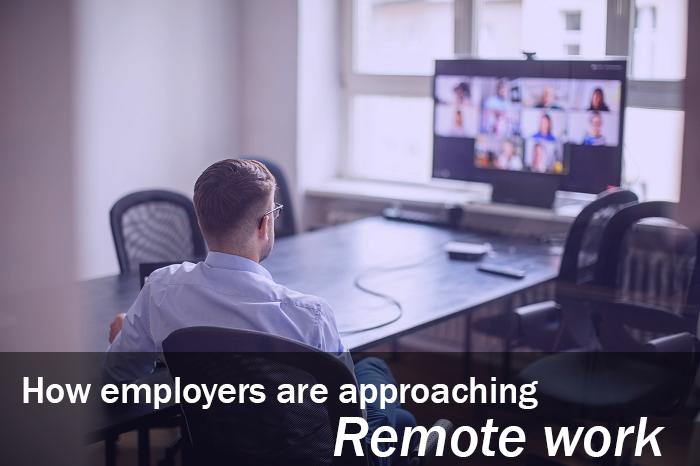As the great work-from-home experiment extends into the summer, many have found the change to be less disruptive than expected–despite having to make the switch seemingly overnight. While it certainly has its challenges (toddler-age colleagues included), overall, we are adapting and experiencing the benefits of virtual work firsthand, particularly those of us with long commutes or who perform better outside of a busy office environment. Employers are taking note and beginning to embrace remote work as a viable option. Several leading companies have already announced their intention to keep a portion of their workforce remote, possibly forever.
Related: What Google’s workplace decision means to other employers
With so much still unknowable, one thing is clear: As executives navigate when and how to get employees safely back into the office, the hybrid model–where some employees work remotely and some are in office–may emerge as the new normal. In fact, according to a May Fortune survey of Fortune 500 CEOs, 26% believe that at least some of their “newly virtual” employees will remain that way permanently.
See also: Tracking the remote work trend
As with any change event, committing to a new operational set-up must be handled thoughtfully. If not, companies face many risks–not the least of which is an unmotivated, unproductive employee base.
The key to getting the hybrid model right is not a technical or operational challenge, it’s a cultural challenge. Here are four key strategies HR leaders can use to make a hybrid model work for your company:
1. Tone at the Top: What’s required of leaders in a hybrid workplace? How will they need to set the tone, what skills will they need and how will their success be measured?
The hybrid workplace will surface new barriers that could make it difficult to connect with, develop and coach employees. With less body language to read and heightened emotions given an uncertain economic situation, empathy arguably becomes a successful leader’s most important attribute. Recognize this new reality by redefining what it means to lead in a virtual environment. Take a more agile and flexible approach to leadership and adjust required skills and competencies to best support employees and customers from a distance. Retrain leaders and managers to demonstrate how they can adapt their style and continue to bring your values to life and deliver the business strategy. Create a set of guiding principles leaders can refer to as they adjust and align to a new way of working.
2. Inclusiveness: What new blind spots will a hybrid workplace create? What are we learning already from virtual working that we can apply to drive greater inclusiveness going forward?
While a virtual and hybrid working environment brings a lot of positive new changes, it also brings new challenges with implications for inclusivity and diversity. Inviting colleagues into your home via video meeting means putting your personal life on display–which can be an issue for those who don’t fit the “typical standard” for what it means to look and act like a leader. It can also be easier for employees to forget to include colleagues they spent less time with in the office. Focus on understanding the challenges that have arisen for your employees in the new virtual setting and set the tone for inclusivity by celebrating the differences of your employees at all levels. Encourage personal interaction and connection with colleagues and share stories that humanize leaders.
3. Ways of Working: What new behaviors are going to be required to facilitate productivity and connectivity? What past behaviors need to be changed or stopped altogether?
The impromptu hallway chat or the unexpected office drive-by can often be valuable in terms of answering questions, gaining approvals and gathering important input. In a virtual working environment, these and many other interactions are forever changed. In this context, it is important to debrief with leaders and employees to understand the barriers and challenges they’re experiencing and gather best practices on how they’ve overcome them. Consider revising the expected behaviors of leaders and employees to promote those that support virtual and hybrid work, like transparency and increased communication. For example, add more frequent informal check-ins that can take the place of hallway chats, or encourage teams to pick up the phone (or log onto Zoom) and reach out to one other even if a meeting isn’t scheduled. Where possible, highlight best practices through storytelling and recognition. Know that technology and other operational barriers may surface and require a second look at the platforms and methods of communication available to the workforce.
4. Traditions: What existing cultural symbols and traditions can we leverage or adapt, and what new ones will we need to create?
The reality is that your culture will inherently change as ways of working do. Team-building activities like working sessions, happy hours and milestone celebrations will need to be rethought or reformatted to ensure inclusivity and connection between the physical and virtual workforces. Be intentional about adapting your culture now to support the way work will be done in the future (e.g., rather than cancel a beloved, annual office talent show, move it to Zoom). Find new ways to keep traditions alive online or add a virtual component to what you’ve always done. Then, encourage employees to come up with new programs, initiatives and activities organically to both support the culture you’ve built and move your workforce toward the future.
Related: I’m a remote worker. Here’s what I want HR leaders to know.
As with other cultural changes, a strong hybrid workplace culture won’t happen overnight. But small steps can be taken and quick wins can be celebrated. And even if we’re wrong, even if someday we return to a primarily office-based working model, it seems prudent to prepare for this interim model rather than waiting for it to pass by.





